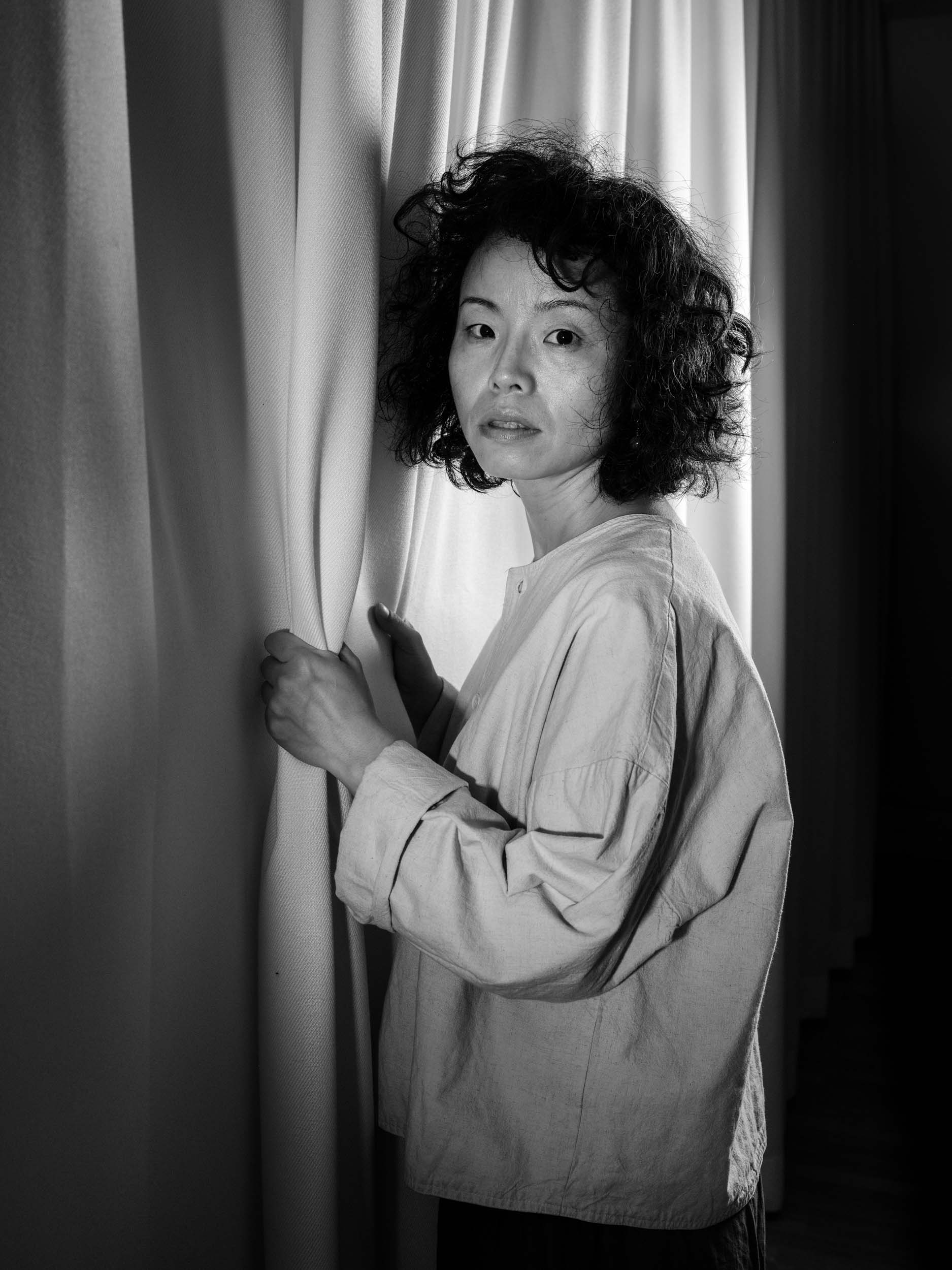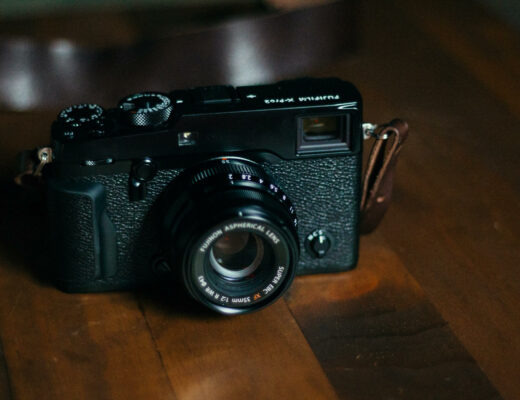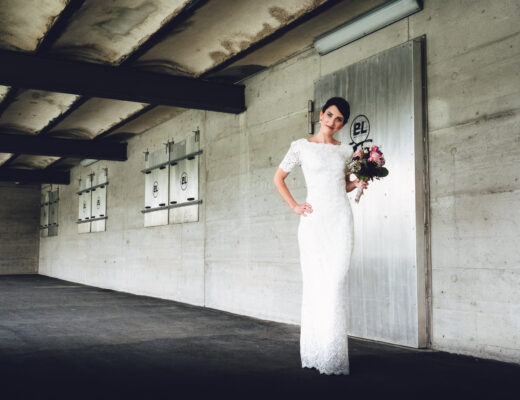I have owned Profoto gear for some time now and have always been happy with the output and quality of my B2’s and B1. Working with the battery powered system is simple and straightforward on location. As a Fujifilm user, up to now I sorely missed the ability to shoot in high-speed sync mode (HSS) in bright daylight, faster movement as well as shooting handheld with a medium format camera.
Important update (March 13th 2018): In the original version of this article I wrote that HSS needs to be set on the remote as well as on the flash, which is not correct. It needs only to be set on the remote and is synchronized automatically with the flash.
I shoot a lot with the GFX 50s and its shutter sync speed of 1/125s is often to slow (I find I need faster shutter speeds than with APS-C sensors to sharp images). TTL (through the lens metering) is a nice extra but not mandatory for me. Accordingly, I was thrilled when Profoto last year finally announced their new Air Remote TTL-F trigger for Fujifilm cameras. While the Air Remote TTL itself is not new, it was only available for Nikon, Canon, Sony and Olympus so far. If you wanted to use Profoto flashes with Fuji cameras, you had to either take the Nikon trigger (the Canon trigger does not work with Fujifilm as far as I know) but without the benefit of HSS and TTL or use some work arounds.
Profoto supplied me for this review with an Air Remote TTL-F, a B1X To-Go Kit 500 AirTTL (B1X head and OCF beauty dish white) and an OCF Grid Kit.
The B1X is an updated and improved version of the original B1 and performs equally well with some additional features like adjustable modelling light and new and more powerful battery. The OCF beauty dish can be folded down, is quickly set up and provides beautiful soft light for portraits and skin. The grid kit comes with a holder and three different honey comb grids (10°, 20° and 30°) that snap into the holder. Neither the B1X nor the provided light shaping tools are brand new and there are plenty of reviews on the net to be found. I therefore focus on the new remote for Fujifilm in this review.
The Air Remote TTL-F (for Fujifilm) supports TTL, high-speed sync (HSS) and front and rear sync. It is a very easy to use solution but comes at a rather steep price of around 385 Euro (Germany).
My wonderful model for this test series was Heya. Among other things (she offers traditional Chinese medicine) she teaches workshops in QiGong Dance, is anyway an avid dancer and loves to improvise.
Design
The design of the Air Remote TTL-F is the same as the for the already existing ones. The trigger sits at an approximate angle of 30 degrees on the hot shoe and is very well built. With its size, the trigger fits nicely on the body of the GFX 50s as well as on smaller bodies like the X-T2 and X-Pro2. Access to dials is not blocked as is sometimes the case with triggers, which lie flat on the hot shoe.
- GFX50S with Air Remote TTL-F
- X-T2 with Air Remote TTL-F
The display is easy to read, and the buttons are easy to press. Each button has its own function and there are no double functions assigned. The unit runs on two standard AA batteries and has a USB mini port for firmware updates. To search for updates, one has to have an account for the Profoto website, register the products and only then updates are shown and downloadable.
Functionality
The trigger offers a wide variety of functions and most of the setting you want to change on the flash can be accessed from the trigger, including HSS (except HSS, needs to be set at the flash as well).
The trigger works well and radio range is more than sufficient for my type of work, but I did not test the 300m (1000 ft) of reach, which Profoto specifies in the manual. It offers 8 different channels (select with the CHANNEL button right of display) with up to three groups of lights on each channel (buttons A, B, C). The flash heads of the selected group can be switched on and off with the HEAD button just as the model light can be switched on and off with the MODEL button.
When shooting in manual mode the ENERGY buttons are used to adjust the light output for the group. The adjustment (increase/decrease) always starts from the current light output setting and the adjustment value (e.g. + 1.5 f-stops) is momentarily shown on the Display. There is no option to see the actual energy output on the remote (e.g. 9, actual output shown on flash ranges from 10 – 2). If you are working in TTL mode, you can adjust the energy level for the selected group with the “ENERGY” buttons up to ±2.0 f-stops.
Ease of use
Having shot for some time now with my old Nikon Air Remote TTL-N on Fuji cameras, I was very much looking forward to the HSS capabilities of the new Fuji remote. While I do not rely on TTL for flash output, I am not such a heavy-duty flash user that I can eyeball flash output levels for any situation. I find it convenient and fast to get a first reading for the flash output in TTL mode. After this, I then switch over into manual mode by pressing the MODE button on the remote. When changing from TTL to manual mode, the flash keeps the energy level from the TTL reading. I then only have to further adjust and fine tune the desired flash output from the remote et voilà, I am already ready for shooting.
The most important function for me is the possibility to shoot in HSS mode. HSS can be turned on by pressing the SYNC button (cycle between 1st, 2nd and Hi-S (HSS) and there you are: able to shoot with shutter speeds of up to 1/400s on the GFX and 1/8000s on the X-T2/X-Pro2. This is great for shooting portraits wide open in bright sunlight (no more ND-filters needed to bring down the shutter speed) and to freeze movement and action (not possible with the GFX’s 1/125s sync speed). All you have to do is dial in HSS on the remote and it will be synced to the flash (no need to set anything on the flash itself).
But beware! You have to set HSS on the flash unit as well as choose HSS on the remote (which I somehow missed when studying the manual…). I wished that the remote would detect if shutter speeds above the cameras flash sync speed are chosen and switch automatically into HSS mode (and communicate this to the flash head). This is not a deal breaker at all, just something to be aware off. It maybe even could be added through a firmware update? But anyway, having HSS with the Profoto flash units is great and most welcome. Initially I was of the impression that Freeze needs to be set on the flash, in order to achieve HSS, which is not true. HSS needs to be only set on the remote and the setting will by synced automatically to the flash. Freeze mode on the flash is a function optimized for shortest flash duration which is the best option for shots where the flash is used to freeze fast movement and is unrelated to HSS (if both are activated, the HSS setting will override the Freeze setting).
What I liked
- finally, high-speed sync for Fujifilm cameras
- easy and straightforward to use
- compatible with current Profoto models
- compatible with current Fuji cameras
What I don’t like
need to manually set HSS on the trigger as well as on the flash unitHSS is set on the remote and synced to the flash head- hefty price tag
Final verdict
The Profoto Air Remote TTL-F has been eagerly awaited and meets the expectations placed on it. The build quality is up to Profoto’s high standards and the functionality leaves almost nothing left to desire. I personally would like to be able to automatically switch between normal and high-speed mode (when changing shutter speeds at the camera) and a somewhat lower price tag would be welcome. Other than that, Profoto provides a great system for on location flash which performs beautifully.






























